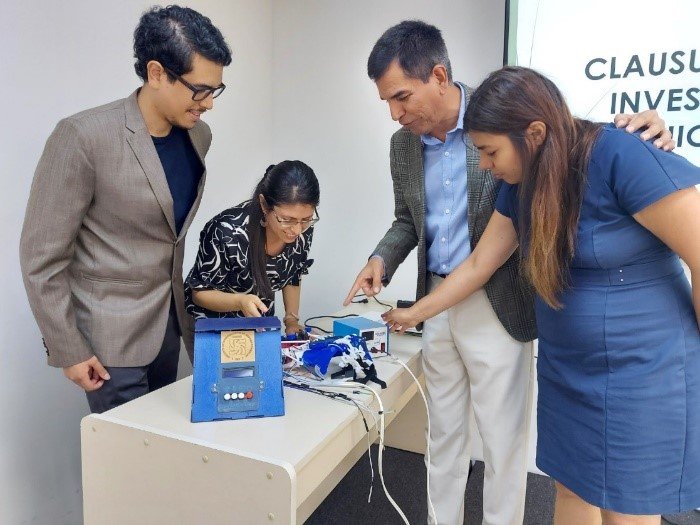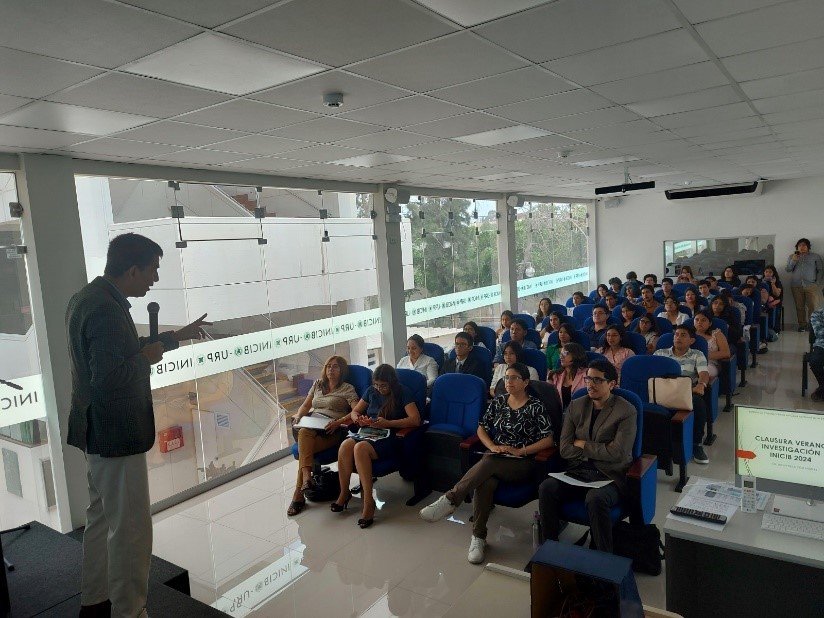EDITORIAL
REVISTA DE LA FACULTAD DE MEDICINA HUMANA 2024 - Universidad Ricardo Palma10.25176/RFMH.v24i3.6701
HEALTH WITHOUT BORDERS: INICIB-URP LEADING MEDICAL EDUCATION THROUGH BIOENGINEERING AND MECHATRONIC TECHNOLOGIES
SALUD SIN FRONTERAS: INICIB-URP LIDERANDO LA EDUCACIÓN MÉDICA A TRAVÉS DE BIOINGENIERÍA Y TECNOLOGÍAS MECATRÓNICAS
Mariela Vargas
 1,
Jose Cornejo
1,
Jose Cornejo
 1,
Jhony A. De La Cruz-Vargas
1,
Jhony A. De La Cruz-Vargas
 1
1
1 Instituto de Investigaciones de Ciencias Biomédicas, Universidad Ricardo Palma. Lima, Perú.
Medical education is at a turning point due to the rapid advances in biomedical technology and robotics in rehabilitation. This editorial examines the importance of integrating these innovations into medical curricula, highlighting statistics on medical education in Latin America and Peru, and discusses the challenges and opportunities for improving the training of future health professionals.
In the 21st century, technology is redefining medicine and, consequently, medical education. Biomedical technology and robotics in rehabilitation offer new tools to enhance teaching and clinical practice. In Latin America, including Peru, it is crucial for medical schools to adapt their programs to incorporate these technologies and adequately prepare their students.
According to the Pan American Health Organization (PAHO), the Latin American region faces significant challenges in medical education, with a deficit of approximately 800,000 doctors by 2030 (1). In Peru, the Ministry of Health reports a deficit of around 17,000 doctors, highlighting the need to improve and modernize medical training (2).
Biomedical technologies, including simulation, telemedicine, and big data analysis, are essential for modern and effective medical education.
-
Simulation and Augmented Reality: Patient simulators and augmented reality platforms allow students to practice procedures in a safe environment. These methods have been shown to significantly improve students' technical skills and confidence (4-6).
-
Telemedicine: Telemedicine has become an essential tool, especially during the COVID-19 pandemic. Integrating it into the medical curriculum prepares future doctors to provide remote care, improving healthcare accessibility and efficiency (7-11).
-
Big Data Analysis: The ability to handle and analyze large volumes of data is crucial in modern medicine. Training in bioinformatics and data analysis equips students to use this information in clinical decision-making (12-15).
Robotics in Rehabilitation: Robotics in rehabilitation is transforming postoperative care and physical rehabilitation, providing new opportunities for medical education.
-
Exoskeletons and Robotic Devices: Exoskeletons and other robotic devices aid in the rehabilitation of patients with spinal injuries, strokes, and other neurological conditions. These devices improve patients' mobility and quality of life (16-19).
-
Robot-Based Therapies: Therapeutic robots enable intensive and repetitive rehabilitation, essential for functional recovery. These therapies have been shown to improve strength and motor coordination (20-23).
Challenges in Implementing Technologies: The adoption of new technologies in medical education faces several challenges, including resistance to change, lack of adequate infrastructure, and the need for continuous training for teachers.
-
Resistance to Change: The adoption of new technologies can be hindered by resistance to abandoning traditional methods. It is crucial to foster a culture of innovation and flexibility among educators and students (24).
-
Infrastructure and Resources: Implementing these technologies requires investments in infrastructure and resources. Institutions should seek funding and collaborations with the technology industry to overcome these barriers (25).
-
Teacher Training: Teachers need continuous training to stay updated with new technologies. Professional development programs and specific workshops can help professors integrate these tools into their teaching (26).
Opportunities and Benefits: Despite the challenges, the opportunities offered by biomedical technology and robotics in rehabilitation in medical education are immense. These technologies can significantly improve students' training and the quality of patient care.
-
Improved Clinical Competence: Simulation and robotic tools enhance clinical skills and prepare students for real-life situations (27).
-
Personalized Learning: Technology allows for a more personalized approach to learning, adapting to the individual needs of each student and improving knowledge retention (28).
-
Future Preparedness: Familiarity with advanced technologies prepares students for a clinical environment where these tools will be increasingly common (29).
For these reasons, the Instituto de Investigaciones en Ciencias Biomédicas (INICIB) at Universidad Ricardo Palma has been promoting activities to strengthen competencies in biomedical research, such as the Summer Research Internship – 2024 held from February 15 to March 15 of this year. The general objective was to develop comprehensive competencies in research methodology, scientific writing, and biostatistics among enrolled students through a structured and practical training program, enhancing their academic and professional preparation, and fostering their active participation in cutting-edge biomedical research.
The results were gratifying, with the participation of 60 students from the faculties of Human Medicine and Mechatronics Engineering at URP, who developed final products such as original articles, review articles, clinical cases, letters to the editor, and research protocols Table 01.
| Resources / Products | N° |
|---|---|
| Approved students | 60 |
| RENACYT* research mentors | 19 |
| Research groups (various areas) | 31 |
| Clinical Rotation groups (Clinical Oncology) | 02 |
| Theoretical sessions: Research Methodology | 08 |
| Theoretical sessions: Laboratory Procedures Training | 04 |
| Practical sessions in INICIB laboratories | 16 |
| External guided visit (Robotics-Based Rehabilitation Center: CEREBRO) | 01 |
| Letters to the editor and scientific articles developed | 31 |
| Manuscripts submitted to Scientific Journals | 17 |
| Research projects submitted to FAMURP Ethics Committee | 14 |
| Manuscripts accepted/published in Scientific Journals | 2 |
Highlighting the integration and collaboration between medical and mechatronics engineering students, under the guidance of INICIB research mentors, emphasizing the design of a hand rehabilitation exoskeleton using the Flashforge Creator 3 Pro ® printer from INICIB-URP. Figure 01
Figure 1: Hand Rehabilitation Exoskeleton
This internship also allowed students to conduct rotations in INICIB laboratories, clinical rotations in specialized cancer centers, and guided tours coordinated through the Institute.
The integration of biomedical technology and robotics in rehabilitation into medical education is crucial for preparing future physicians for the challenges of the 21st century. Although there are obstacles, the opportunities and benefits of this transformation are significant. Faculties of Human Medicine, including Universidad Ricardo Palma, must lead this change, ensuring that their graduates are equipped with the necessary skills to fully leverage these innovations
Figure 2: Closing ceremony led by Dr. Jhony De La Cruz Vargas, Director of INICIB.
Correspondence author:
Mariela Vargas
Address:
INICIB, Facultad de Medicina Humana, Edificio I-208. 2do piso. Avenida Benavides 5440,
Surco, Lima-Perú.
Phone:
708-0000 / Extension: 6016
E-mail:
mariela.vargas@urp.edu.pe
Article published by the Journal of the faculty of Human Medicine of the Ricardo Palma University. It is an open access article, distributed under the terms of the Creatvie Commons license: Creative Commons Attribution 4.0 International, CC BY 4.0 (https://creativecommons.org/licenses/by/4.0/), that allows non-commercial use, distribution and reproduction in any medium, provided that the original work is duly cited. For commercial use, please contact revista.medicina@urp.edu.pe.


